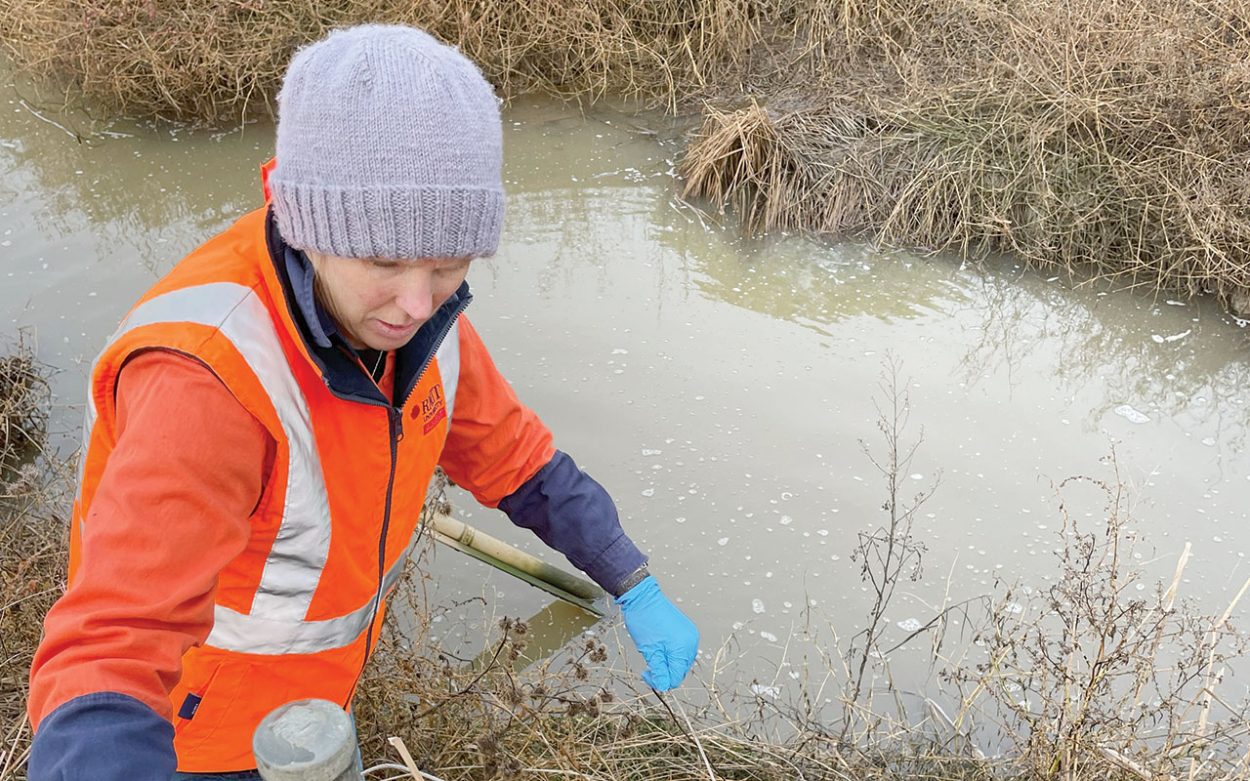A REPORT on coastal estuaries has highlighted, in some cases, dozens of chemical contaminants in Mornington Peninsula waterways.
The report “Exploring Unseen Threats: Contaminant Trends and Impacts in Port Phillip Bay” by RMIT aquatic ecotoxicologist Dr Jackie Myers, contained the results of the first round of sampling of 34 estuary sites; 18 in Port Phillip Bay and 16 in Western Port.
The report stated that “Contaminants of concern are chemicals that can cause harm to aquatic ecosystems and human and environmental health due to their toxic, persistent, and bio-accumulative properties”.
“Port Phillip and Western Port bays and their estuaries hold immense ecological, social, and economic value.
“Understanding water quality in estuaries and the bays is therefore of critical importance to local, state and federal agencies, given the direct links between environmental health and the economic, social, environmental and cultural values they support.”
The results across all waterways sampled in Port Phillip Bay and Western Port identified a total of 104 different contaminants from a targeted screening of 450 contaminants.
The majority of detected contaminants were herbicides (31%), fungicides (28%), insecticides (17%) and pharmaceuticals (11%) with the most common being Tebuconazole (a fungicide commonly used on cereals, fruits, vegetables and turf), Carbendazim (a fungicide used to control fungal diseases in pulses and timber products), Simazine (a herbicide often used to control weeds in agricultural and urban areas), Propiconazole (a fungicide widely applied on turf, timber products, cereals, and fruit crops) and Diuron (a herbicide used in agriculture and also for weed control in non-crop areas).
Seven of the sites across Port Phillip Bay and Western Port contained more than 25 chemicals in their sample, with two of those sites on the Mornington Peninsula. The report noted that these sites were typically located in catchments dominated by industry or intensive agriculture.
The highest level of contaminants across all sites was detected in Watson Creek Estuary with 33 different chemical contaminants identified. Watson Creek originates in Frankston South and passes through Somerville and Pearcedale before entering Western Port at Watson Inlet in Somerville and into the Yaringa Marine National Park, home to Ramsar listed mangrove communities.
Also high on the list with 25 chemical contaminants identified was Chinamans Creek Estuary; a waterway constructed to drain the Tootgarook Swamp, that empties into Port Phillip Bay at Capel Sound.
Estuaries on the Mornington Peninsula affected by lower human impact contained fewer contaminants.
On the Western Port side of the peninsula, after Watson Creek Estuary, the next highest levels of chemical contaminants identified were at Olivers Creek Estuary (16), Kings Creek Estuary (10), Warringine Creek Estuary (8), Stony Creek Estuary (8) and Merricks Creek Estuary (7).
On the Port Phillip Bay side, after Chinamans Creek Estuary, the next highest levels of chemical contaminants identified were at Balcombe Creek Estuary (17) that enters the bay at Mt Martha and Sheepwash Creek Estuary (16) that enters the bay at Safety Beach.
Speaking on the Watson Creek Estuary results, the secretary of the community based environmental group Save Westernport, Julia Stockigt, told The Times “this report’s results have shocked Save Westernport and will be deeply concerning for local communities, and anyone who enjoys or visits Western Port”.
“Western Port has a long history of harmful industrial developments requiring dredging and wetland reclamation. The Port of Hastings Corporation’s new government-backed plan for an enormous windfarm terminal will require extensive dredging and reclamation if approved. Throughout its construction and operation, contaminated sediment would be mobilised from the outflow of Watson Creek nearby.”
The author of the report, Dr Jackie Myers, told The Times “I am not really surprised by any of the data. It is consistent with what we’ve seen previously”.
Myers said a misconception in the community is that high chemical contaminants were only linked with industry or agriculture.
“Areas of intensive industry and agricultural activities do contribute significantly to contaminant pollution, but many of these contaminants also come from urban origins. So, it’s not just an industrial or agricultural issue,” said Myers.
“We see insecticides that originate from termite control, herbicides from products people use around their home gardens or local authorities use in parks, and pharmaceuticals used for our pets.
“From that standpoint, we need to look more closely at our urban activities as well to control chemical contaminants in our waterways.”
Myers said the purpose of the study is to better understand what is present in our waterways.
“Once we understand what chemical contamination is present, we can then do something about managing it,” said Myers.
The project has another six rounds of testing and Myers is encouraging people to get involved by volunteering to assist. Information on the project can be found at: rmit.edu.au/aquest/ppb-unseen-threats
Dr Jackie Myers will be the guest speaker at the Westernport Peninsula Protection Council AGM at 10am Sunday 1 February at Balnarring Hall, talking about threats to the health of the Western Port from contaminated runoff in the Western Port catchment.
First published in the Frankston Times – 18 November 2025

